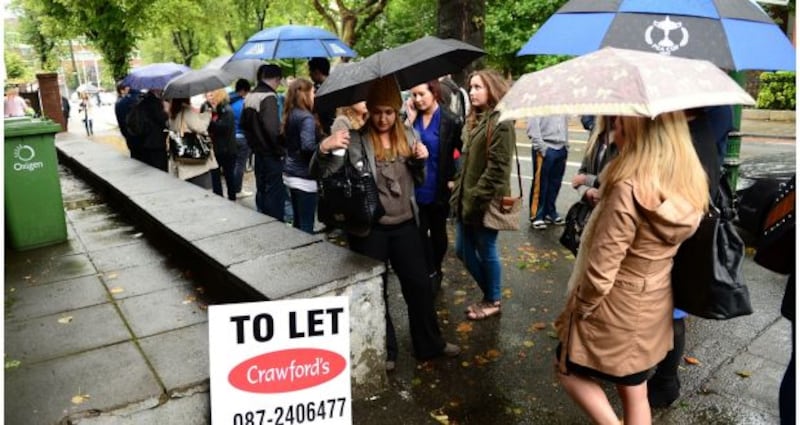The chief executive of the State's Housing Agency, John O'Connor, has warned the Government against increasing the vacant sites levy from 3 per cent to 7 per cent from 2020.
The anti-land hoarding levy, which will be payable for the first time from January, is being unevenly applied across the State, leaving it open to challenge, Mr O’Connor said.
Since last January, local authorities have had the power to impose a levy on property owners who fail to develop prime housing land but had to inform land owners by June 1st, if they wanted to get payments in 2019.
The levy, set at 3 per cent of the value of the land in 2018, is to be increased to 7 per cent for subsequent years. To be hit with the levy, the vacant sites must be bigger than 0.05 of a hectare, excluding gardens. The majority of the site must be “vacant or idle” for more than 12 months, be zoned for residential or regeneration purposes, and be in an area in need of housing.
Property owners have 28 days to object to their site being put on the Vacant Sites Register after they are notified by the council. If the council decides the property should still be on the register, the owner has another 28 days to appeal the decision to An Bord Pleanála.
High profile
Across the State sites worth more than €300 million have been added to the register by local authorities. The majority are in the Dublin City Council area where sites worth more than €203 million have been identified, the most high profile being the former Player Wills cigarette factory on the South Circular Road, valued at €23.8 million and its neighbouring site, the former Bailey Gibson packaging plant valued at €12.5 million.
Fingal County Council, which has Dublin's greatest area of available development land has listed sites worth €45 million. Dún Laoghaire-Rathdown, which has some of the highest land values in the State, will apply the levy to sites worth only €17 million, following the decision of An Bord Pleanála to uphold appeals against the listing of almost €80 million in land owned by Horse Racing Ireland, a €22.5 million site owned by the Central Bank, and a €21.5 million site owned by the Carmelite Order.

South Dublin County Council has listed sites worth just under €9 million on its register.
However, while most large local authorities around the State have registered some sites, notably Cork County Council which has sites worth about €32 million, others such as Galway City and County have listed none. While Kildare County Council, which has a high housing demand, has listed 13 sites in recent weeks, none were on time to face the levy in 2019, similarly in Meath, just two of its 13 vacant sites were registered by the June deadline.
‘Rigorously uniform’
“The vacant site levy is a very important measure that we make work in terms of getting residential development happening,” Mr O’Connor said.
“It is important that it’s implemented uniformly across the country. We have 31 local authorities and they are all implementing it differently. My view is it needs to be rigorously uniform.”
He sites the example of Roscommon where 30 sites have been entered on the register, compared to Fingal where there are just six.
My own personal view, and I've said it to the Minister: you're better off getting it working first before you change it
“You would nearly wonder how any site could be listed in Roscommon in terms of residential viability, and in some cases it might not even be appropriate to be building housing at all,” he said. “The authority that has the biggest amount of land for residential development is Fingal – they have surprisingly few sites listed.”
It was particularly important, he said, that a uniform approach was adopted in the Greater Dublin Area.
‘Strategic sites’
“Take the four Dublin local authorities. Dublin City Council have done it forensically – I’m not saying that’s good or bad – but they’ve listed out a huge number of sites. And then other Dublin authorities might say we’ll only pick some strategic sites, and I think it would be better that the four use the same methodology for listing out sites, particularly when it comes to resolving disputes.”
The establishment of a uniform system, which should be lead by a team in the Department of Housing, should be done before the levy was increased, he said.
“My own personal view, and I’ve said it to the Minister: you’re better off getting it working first before you change it. I would have been slow to go for the increase. At 7 per cent you are going to very seriously challenge something. If it’s 3 per per cent you might just pay it. But at 7 per cent, you’re going to get a good legal team to challenge it because of the amount of money involved.”











